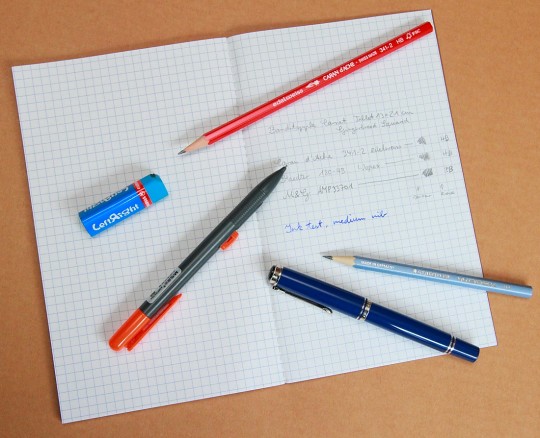nu: Tough Paper
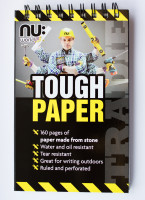 I’m not a big fan of spiral bound notebooks or notepads. Spiral binding will usually put me off buying a notepad, but in the case of the spiral bound, Chinese made nu: tough paper I couldn’t resist.
I’m not a big fan of spiral bound notebooks or notepads. Spiral binding will usually put me off buying a notepad, but in the case of the spiral bound, Chinese made nu: tough paper I couldn’t resist.
I saw this notebook in the supermarket run by my employer’s /my university’s students’ union and the words “paper made from stone” managed to grab my interest at first sight.
Material
The paper is made from 80% ground limestone / chalk and 20% HDPE (many plastic bottles are made from HDPE) and promises to be water-proof, wipeable, tough, durable and, to my surprise, recyclable and biodegradable [1]I don’t know much about plastic, so I would very much appreciate if someone could explain biodegradable in the context of HDPE. A quick look on the Internet seems to suggest that you can make … Continue reading
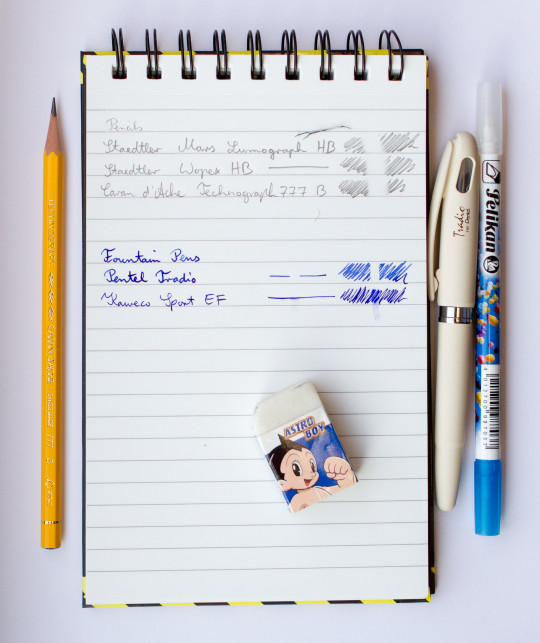
How does the paper behave?
..with pencils
Compared to normal paper the pencil line left on this ‘stone paper’ feels much darker . The line also feels wider. Applying less pressure when writing will also produce a fairly dark line, more so than writing with less pressure on normal paper. I suspect this behaviour is caused by a rougher paper surface. You can certainly feel more friction when moving a finger across the ‘stone paper’, compared to normal paper.
How does the ‘stone paper’ compare to similar products? The lines left on this paper are also darker than those a pencil would leave on paper from a Rite in the Rain notepad. Altogether, this paper produces an unusual, but pleasant pencil writing experience.

..with fountain pens
Let’s stick to the similar Rite in the Rain notepad for a moment. It’s pretty useless when you want to use it with a fountain pen. The ink just stays on the surface of the paper, it might even form tiny droplets …until it eventually dries. Because the ink didn’t really penetrate the top layer of the paper the colour of the writing is usually quite light. The behaviour of fountain pens and ink on nu:’s tough paper is quite different. The written text even looks very similar to text written on a normal piece of paper, with two differences:
- there is an absence of visible texture on the ‘stone paper’, in my opinion this does influence the look of ink more than the look of graphite
- the moment your fountain pen is a wet writer, even if only to a very small degree, the ink will take a really long time to dry.
On the above image you can see text written by a Kaweco Sport with an EF nib. The cartridge was empty and the pen was therefore an extremely dry writer. Drying took a few seconds. The lines made by the Pentel Tradio on the other hand, not a wet writer when I compare it to some of my other fountain pens, took just under 10 minutes to dry. On normal paper the Tradio‘s lines only take a few seconds to dry.
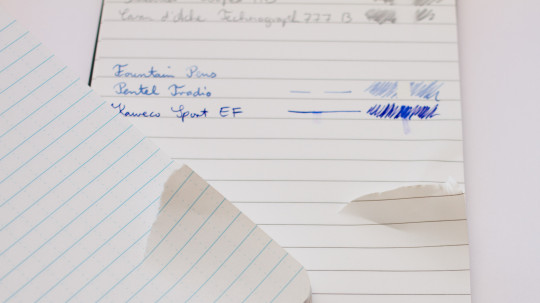
How strong it the paper?
The paper seems to cope better with ‘bad conditions’, like wetness and physical impact. When trying the tear it nu:’s tough paper does behave rather unusual. Unlike the Rite in the Rain paper, which provides a similar ripping experience to traditional paper, ripping the tough paper feels a bit like ripping thin sheets of plastic. This is probably cause by the HDPE content. Normal paper usually rips in such a way that a sheet of paper lying horizontally will not be separated by a clear vertical line. Where the traditional paper is separated one half of the torn paper might contain more of the top layer of the paper, while the other half of the paper might contain more of the bottom layer of the torn paper. The tough paper however seems to stretch a bit where you tear, then separate clearly, while the stretched part curls slightly. It feels rather plasticy.
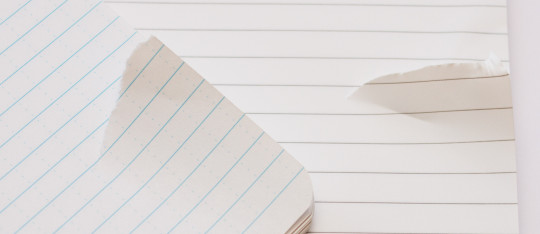
Conclusion
Altogether a nice notepad. It’s an interesting novelty and I’m sure I’ll enjoy using it, but I’m not sure I’ll buy more once the novelty effect has worn off.
I paid £2.50 for this notepad. It’s spiral bound, has a tough cover and back, and has 160 sheets of paper.
In 2013 Wired published an interesting article about ‘stone paper’.
I bought the Pentel Tradio in 2013 at Müller Markt in Volkach. As far as I remember it was extremely cheap (<€10).
References
| ↑1 | I don’t know much about plastic, so I would very much appreciate if someone could explain biodegradable in the context of HDPE. A quick look on the Internet seems to suggest that you can make HDPE biodegradable by changing the recipe slightly. On a different note: biodegradable plastic reminds me of Dave’s biodegradable pencil test. |
|---|

